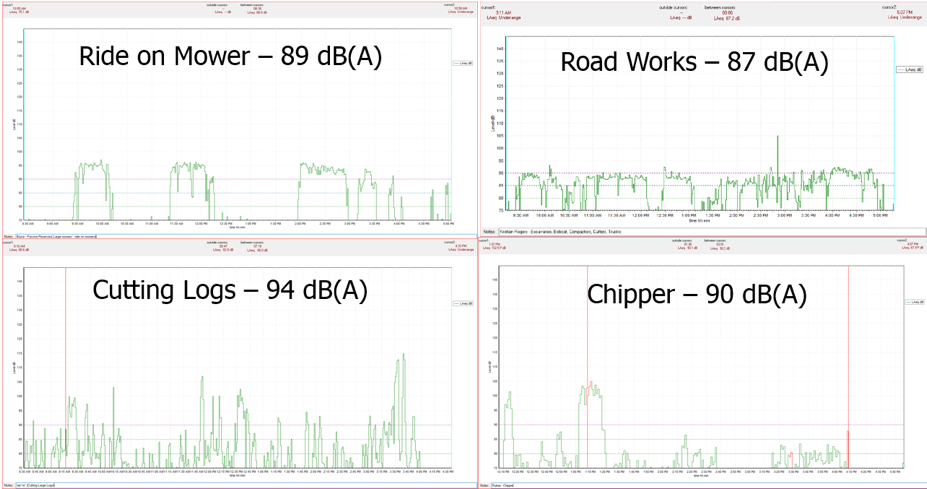Are Your Noise Assessments Actually Compliant?
When the Victorian Noise Compliance Code was updated in 2018, it raised the bar for WorkSafe expectations of noise assessments. Of particular note was the requirement to use dosimetry to measure personal sound exposure for mobile employees and in areas difficult or unsafe to use hand held sound level meters.
In the Code it discusses the need for personal noise dosimetry to be used for situations where employees are highly mobile (rotating jobs) or work in a varied workplace, to determine their individual noise exposure levels. The Code states that spot noise assessments or noise mapping on their own are not sufficient to complete a noise determination because in most cases it does not represent each employee’s actual exposure.
Past Methods
In the past, noise exposure levels were measured by hand for each task an operator conducted and then the exposure level was calculated based on the duration of the task. By completing this process for all tasks conducted over a full shift, the employees’ noise exposure level was determined and compared to the exposure standard to determine if the workplace noise was hazardous.
This technique wasn’t entirely precise as in reality it wasn’t practical to track each and every task of an operator. Besides, it is common for employees, for example forklift drivers, to operate on different tasks on different days. This would mean that the entire process of calculating the noise exposure levels would take hours and not always result in accurate exposure levels.
The Use Of Dosimetry
A more precise and effective approach to measure the noise exposure levels is by using personal noise dosimeters. These are noise monitoring devices which are placed on the shoulder of the operator and record noise levels over the course of the shift. Because it is placed close to the ear, it provides an accurate representation of the noise levels that operators are exposed to.
The dosimeters measure and calculate the noise exposure level based on the time they are recording on the operator, therefore providing a highly accurate result of what noise levels employees are truly exposed to. Importantly, the dosimeters are not required to record audio, only the noise levels, so employee privacy is preserved. They are also small and light, so they do not interfere with employee tasks and productivity.
Why Dosimetry Is Important
To demonstrate why dosimetry is so important when performing occupational noise assessments, here are examples of dosimetry data obtained from 4 different roles performed by Council workers. The overall noise exposure level for the entire shift is displayed at the top of each graph.

It can be seen that for the Ride On Mower result, if the assessment was conducted without dosimetry, we could expect a reasonably accurate result as levels are constant when mowing is performed. Conversely with the Cutting Logs results, it would be almost impossible to determine the exposure noise level without the use of dosimetry as the levels are so variable throughout the shift.
Interestingly, by comparing the Road Works and the Chipper results, we can see that short durations of very high noise levels (105 dB(A) for 20 minutes of the chipper) can result in much higher noise exposure level than those where employees are exposed to high noise levels for long durations (85 to 90 dB(A) for 8 hours of the road works).
JTA’s Commitment To Dosimetry
The Compliance Code requirements are consistent with JTA’s long held philosophy and our approach on how Occupational Noise Assessments should be conducted.
Even prior to the updated code, we believed that dosimetry was essential to accurately determine worker exposure levels when engaged in multiple tasks with different noise sources, single tasks with complex noise profiles, tasks with exposures approaching the standard, and tasks which are difficult to assess with only a sound level meter.
State Of The Art Equipment
In order to ensure that we provide the most accurate assessments in accordance with the new code, we have incorporated new, state of the art dosimetry equipment into our regular noise assessments. These new dosimeters can do all of the functions standard dosimeters can but with some valuable extra capabilities such as recording octave band data, high vibration levels, statistical noise levels etc. while being intrinsically safe.
Incorporating this new equipment into our standard assessments allows you to rest assured that your noise assessments are fully compliant and that your workers’ safety is assured.
Learn more about our new state of the art dosimetry equipment









